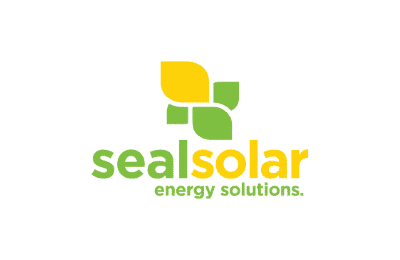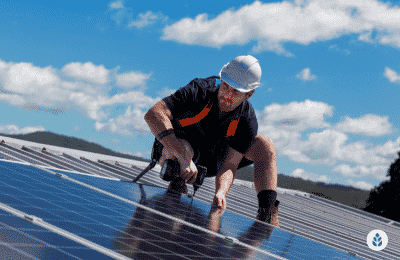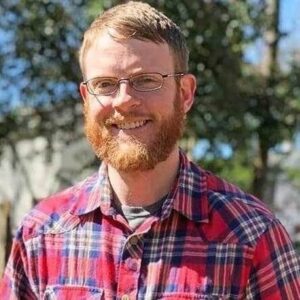 Reviews
Reviews
Arkansas Solar Incentives (Rebates, Tax Credits & More in 2024)
In this guide to minimizing the cost of solar conversion in Arkansas, you’ll learn:
- What solar benefit programs are available in Arkansas?
- How much can you save by taking advantage of the solar perks in Arkansas?
- Which solar benefit programs in Arkansas provide the best return on investment?
Each product and or company featured here has been independently selected by the writer. You can learn more about our review methodology here. If you make a purchase using the links included, we may earn commission.
Do Arkansas Solar Incentives Make It Affordable for Homeowners to Go Solar?
Yes, absolutely. Converting to solar in the Land of Opportunity is costly, but the available incentives can save you thousands on the total price of your solar system.
The average cost of solar panels in the state of Arkansas hovers around $34,870, which is about $5,000 above the national average. Local prices are high because of above-average energy consumption demands in Arkansas. This means you’ll need a larger solar panel system size.
While Arkansas has less incentives to go solar than surrounding states the benefit programs that are available can bring down your total conversion costs by thousands of dollars.

Blue Raven Solar
Pros
- Industry-leading in-house financing
- Competitive pricing
- Excellent reputation
Cons
- Doesn't offer solar batteries (coming 2022)

Seal Solar

Local Service
Average cost
Pros
- Outstanding customer service
- Great warranty coverage
- Representatives are experts on local policies
Cons
- Limited service area
- Limited brands of solar equipment available
- No leases or PPAs
In the chart below, we list all of the incentives available in your area, along with how each of them works and the average savings each can provide. Keep in mind that eligibility can vary, but we’ll get into specifics in later sections.
| Solar Benefit Programs in Arkansas | Incentive Type | Description | Occurrence | Estimated Dollar Amount You Can Receive |
| Federal Solar Investment Tax Credit (ITC) | Federal | Credits your income tax liability with 30% of your solar power system installation cost. Eligible expenses include labor, panels, solar batteries and inverters. | One-time: Your credit amount is determined once when you file for the perk along with your taxes. However, the credit can be applied for up to five total tax years. | $10,461, on average |
| Property Assessed Clean Energy (PACE) Financing | State | Provides affordable and low-interest-rate solar loan options for commercial and industrial customers, as well as nonprofits. | One-time: Benefits are assessed once when you enroll in the program, but savings can accrue over time. | Varies based on many factors, including your solar power system costs and monthly electric bills. |
| Net Energy Metering | Local | Allows you to earn bill credits to pay down future power bills when you overproduce solar energy and export to the power grid. | Always in Effect: You will accrue net energy metering (NEM) credits for as long as your panels continue producing energy. | Varies based on the size and cost of your solar power system and your monthly electric bills. |
| Local Incentives | Local | There are some perks available for energy efficiency upgrades to your home. These are offered by municipalities and local electric companies. | Varies depending on the specific incentive. | Varies based on the perk |
What Do Arkansans Need to Know About the Federal Solar Tax Credit?
The federal tax credit for PV equipment is a perk available to all U.S. homeowners from the federal government. It’s a tax credit, meaning you’re able to reduce your tax liability by a percentage of the amount you spent on your new system.
Basically, you can deduct 30% of what you pay to convert to solar from the income taxes you owe the year you convert. If you can’t take the entire thing that year, you can roll over unused credit for four additional tax years. After that, you lose any unused credit.
This program began in 2005 at a 30% credit rate. The rate was scheduled to dip to 26% in 2022 and 22% in 2023, and the original expiration date was January 1, 2024. In the wake of the Inflation Reduction Act (IRA), which was passed in August 2022, the new credit rate schedule is as follows:
- 30% for all systems installed and commissioned from 2022 through the end of 2032
- 26% for all systems installed and commissioned in 2033
- 22% for all systems installed and commissioned in 2034
- The credit won’t be available anymore as of January 1st of 2035
Since most Arkansans pay around $34,870 to convert to solar, the typical credit in the area will come out to $10,461. This is well above the average credit amount in the U.S.
How to Claim the Federal ITC in Arkansas
Thankfully, claiming the federal solar investment tax credit is simple and straightforward, and most residents will spend no more than a few minutes filling out the paperwork. You can follow the steps below to make sure you get access to the credit.
- Step 1: Complete your solar panel installation.
- Step 2: Before you file your taxes for the year in which you installed your system, print out IRS form 5695. This is the form for reporting residential renewable energy credits to the federal government.
- Step 3: File the form alongside your taxes, or provide it to your accountant to file.
If you use tax software like TurboTax to file your income taxes, you can usually just answer questions the program asks you about energy credits. You won’t need to print out the IRS form separately.
EcoWatch’s Opinion on the Federal ITC in Arkansas
The federal credit is an outstanding perk, and it’s one of our favorites for Arkansas homeowners. First, it’s available to all residents, which isn’t the case for some of the local incentives we’ll discuss later. Second, it takes just a few minutes of your time to file for it, and the return on investment is outstanding.
Third, this perk alone provides an average potential price reduction for your solar photovoltaic (PV) system of nearly $10,500. In a state where there are very few other perks available, we believe filing for this one is absolutely crucial.
The downside to the federal credit is that there’s no guarantee you’ll receive the full value. This isn’t a solar rebate; instead, the value comes from being able to offset your tax burden. If you don’t owe $10,461 in taxes the year you go solar — or $2,092 per year for five years following the installation — then you’ll only receive a partial credit.
We’ll explain why we think batteries are going to be a crucial part of Arkansas solar arrays a little later, but for now know that the ITC also applies so solar batteries, as well as other equipment, like EV chargers. Batteries cost between $10,000 and $20,000 in most cases, in which case the average ITC you’d be eligible for would be $3,300 to $6,600 higher than the current average of $10,461.
What You Should Know About PACE Financing in Arkansas
Property Assessed Clean Energy (PACE) financing in Arkansas is designed to make converting to solar energy accessible to commercial solar customers. Business owners can take out low-interest loans for environmentally sustainable projects in their commercial properties – including solar energy installations.
Once you take out the loan, the monthly payments are added to your property tax bill to make them easier to pay. In most cases, the monthly payment can be set so that your total monthly expenditure is below what you previously paid monthly for electricity.
There is legislation in the works to make PACE available for homeowners and low-income property owners in Arkansas, but there is currently no active PACE program for residential solar systems.
Because of that, it’s unlikely that you’ll be able to save much money using this program unless you own a business.
How to Claim PACE Financing in Arkansas
If you confirm that your company or organization qualifies for the program, you can follow the steps below to take advantage.
- Step 1: Go to the Advance Arkansas PACE website and click on Project Application in the Getting Started drop-down menu.
- Step 2: Fill out the application.
- Step 3: A program administrator will connect with you to confirm eligibility and request any additional information or documentation that may be needed.
- Step 4: The representative will walk you through the additional steps, which include choosing a certified installer and completing the installation process.
EcoWatch’s Opinion on the PACE Financing Program in Arkansas
PACE financing is a great option for businesses and nonprofits to break into solar energy and reduce their carbon footprint without laying out the full cost of the PV equipment upfront. We’d love to see the state begin offering this financing option to residential customers, as is done in other states.
With that being said, PACE financing for property owners isn’t always ideal, as it binds your home — and any new owners — to the payment schedule, which can be detrimental if you need to sell your home. Still, it’s a great way for low-income residents to go solar, so we’d be pleased to see the program expanded to include individual homeowners.
Net Energy Metering in Arkansas

Arkansas has one of the most generous NEM policies in the country – and it’s mandated statewide. All solar customers are credited based on the full retail value of each kilowatt-hour (kWh) of electricity sent to the local utility company. This is better than what many other states offer, which is often a lower avoided-cost rate or, worse, the wholesale rate.
Net energy metering provides several key benefits to solar customers. These include:
- Lower monthly energy bills
- Greater long-term savings
- A faster solar payback period due to increased monthly savings
- An increased system value overall
It’s difficult to say exactly how much this perk will save you, but it will absolutely help push you closer to or above the average lifetime savings for solar customers in the area: $23,806.
We should mention that NEM policies are in decline throughout the country. Many states that previously offered the full retail rate are now seeing avoided cost or wholesale rates or the program disappearing entirely. Since there is no local RPS goal to help promote renewable energy sources, it’s possible that the Public Utilities Commission (PUC) in the area will decrease its NEM perks over time.
If that happens, solar savings — which currently average $23,806 in Arkansas over the life of your panels — will decrease significantly. One way to combat that is to install solar batteries, which provide effective one-to-one net metering, even if there is no NEM policy in your area. Batteries do add between $10,000 and $20,000 to your total installation costs — bringing the average total up to around $54,870 before the ITC or $38,409 after the credit. That means even more customers will likely turn to loans, leases and even power purchase agreements to be able to afford going solar.
How to Enroll in the Net Metering Program in Arkansas
Enrolling in NEM is a breeze and usually doesn’t require anything from the homeowner. In many cases, the solar installation company will handle the application for you. Still, we suggest following the steps below to make sure you get access to this incentive.
- Step 1: Contact your utility provider to confirm that your home is equipped with a bidirectional meter. This new type of meter is required to get access to net energy metering. Here are a couple local Arkansas Utility providers and their Solar takes
- Step 2: Choose a solar installer. We suggest screening companies by asking if each will handle the NEM application for you. Most of the solar companies worth your time and consideration in Arkansas will do this for their customers.
- Step 3: Move forward with the installation.
- Step 4: Confirm with your installer that the NEM application was submitted. We also recommend checking your energy bills for accruing credits to ensure the application was processed and that you’re enjoying the benefits of interconnection.
EcoWatch’s Opinion on Net Metering in Arkansas
According to the Solar Energy Industries Association (SEIA), net energy metering is historically one of the most beneficial solar perks in the industry, and we agree.1 It’s especially useful in areas like the Land of Opportunity, where most residents have a well-above-average rate of energy consumption and stand to save more with net energy metering credits.2
Not only is the financial return likely to be massive, but the process of applying for this perk is non-existent for most solar customers. This makes it all the more valuable.
Additionally, this benefit program is extra helpful in the area because of the lack of other perks. Frankly, we’re surprised but delighted to see a mandated net energy metering policy in a state with few other incentives and no RPS goal. We are a bit concerned that the policy will meet its demise in the coming years, though, especially as we see states like California — the #1 state in the country for solar installations and incentives — adopt NEM 3.0 and decrease the credit rate by around 75%.
There has never been a better time than the present to go solar in Arkansas, in large part because you can still be grandfathered in to the current retail-rate net metering program.
Watch Below: Learn What Arkansas’ Solar Outlook Is and What That Means For You
Local Solar Incentives in Arkansas

- Entergy Arkansas Residential Energy Efficiency Programs: Entergy customers can get point-of-sale cash-back perks ranging from $3 up to $350 for efficiency upgrades, like LED light bulbs and heat pump water heaters.3
- First Electric Cooperative Home Improvement Loans: Customers of this utility company can get low-APR financing of between $500 and $15,000 for upgrades like new water heaters, insulation, and Energy Star windows and doors.4
- North Arkansas Electric Cooperative, Inc (NAECI) Residential Energy Efficiency Loan Program: NAECI customers can get funding up to $20,000 — or more, in some cases — at a 1.5% interest rate for improvements to home efficiency. These include heat pumps, windows, doors and duct or air sealing.5
- Arkansas Oklahoma Gas (AOG) Residential Rebate Program: AOG customers can get rebates for water heaters, smart thermostats and furnaces. The rebates range from $100 for thermostats up to $500 for highly efficient gas furnaces or gas water heaters.6
- Southwestern Electric Power Company of Arkansas (SWEPCO Arkansas) Residential Energy Efficiency Rebate Programs: Customers of this power provider can get rebates ranging from $6 up to $500 for a wide variety of efficiency home improvements. These include installing efficient appliances or new insulation.7
You can contact your utility provider to see if there are additional perks available to you, or you can check the Database of State Incentives for Renewables and Efficiency for more information.
Which Tax Incentives Are The Best In Arkansas?
We’ve now discussed all of the solar perks available in the state, as well as those offered for other efficiency upgrades. Below, we’ll include what we believe are the most valuable perks in the area and the ones we recommend you take over all others.
The Federal Credit
The federal solar investment tax credit is an absolute must after you install a new solar energy system. It takes just a few minutes to fill out the application, and it provides an average potential value of nearly $10,500. The return on investment is outstanding. Plus, this perk is available statewide, so all solar customers are guaranteed access to it.
Net Energy Metering
NEM is the other perk we recommend not missing out on. These policies are in decline across the country, but right now, Arkansas mandates utility providers to offer NEM at the full retail value.
This is the best-case scenario, and it’s rare to find across the country. In Arkansas, it’s especially beneficial given the above-average energy consumption in the state. This means greater potential energy savings for electricity costs over time.
Best of all, the process to apply for this perk is usually completed by your installation company, so you’ll have minimal work to do on your end to take advantage of this benefit program.
Remember that net metering likely won’t be in effect forever in Arkansas, as the policy is in decline across the country. If you want to take advantage of this stellar incentive, it’s a good idea to do it in the near future to ensure you get grandfathered in to the current program.
What’s The Near-Term Outlook For More Incentives In Arkansas?
As of this writing, there are no concrete plans for PV incentives in Arkansas to improve or decline in the next few years.
However, since the state currently doesn’t have an RPS goal in place, we believe that the future of its solar perks are in jeopardy. If the state continues to go without one, we’d expect the NEM policy to become less beneficial or even optional, as it has in many other states. If a goal is set, there might be some new perks added to help reach it.
The cost information presented in this article is derived from a comprehensive analysis, incorporating data from multiple industry sources. The average cost per watt per state was calculated based on figures from Consumer Affairs, Energy Sage, and Berkeley Lab’s Electricity Markets & Policy Department. Additionally, monthly energy consumption and the average monthly cost of electricity were sourced from the U.S. Energy Information Administration, ensuring a well-rounded and accurate representation of the information presented.
FAQ’s Arkansas Solar Incentives
In the following sections, we’ll provide answers to the questions we see most commonly about PV incentive programs in Arkansas and how they affect average costs and savings.
At this time, there is no plan for new incentives to become available in the state or for existing ones to improve. Additionally, we don’t see either of these things happening unless an aggressive RPS goal is set, and there’s no sign of that in the next two years.
The IRA pushed back the expiration date for the federal credit by a decade, which is outstanding news for aspiring solar customers. It also increased the credit amount from 26% and 22% in 2022 and 2023, respectively, up to 30%. That retroactively included installations done in 2022 before the bill was signed in August.
Another important change was made to the tax credits available for purchasing electric vehicles. The new maximum credit is $7,500 for specific EVs.
Solar Renewable Energy Certificates, more commonly referred to as SRECs, are credits your solar power equipment earns you for every kWh it generates. You can sell SRECs to local electric companies, which purchase them from solar customers to meet RPS guidelines set by the state’s PUC.
Unfortunately, there are no SRECs in Arkansas, as there is no renewables goal for utility providers to meet.
There is no clear indication that incentives for solar energy systems will become less valuable or less widely available in the area in the next two years.
With that being said, we wouldn’t be surprised to see the net energy metering program decline, become voluntary or disappear entirely. NEM policies have been changing for the worse in many states, and the same is likely to happen in the Land of Opportunity in the future unless an RPS goal is set. Even then, the policy will probably at least become less beneficial.
Top Solar Installers in Arkansas Cities
Comparing authorized solar partners
-
- Industry-leading in-house financing
- Competitive pricing
- Excellent reputation
- Doesn't offer solar batteries (coming 2022)
A+Best Solar Financing2014Trina Solar, Canadian Solar, SolarEdge, Silfab, SunPower25-year manufacturer warranty; 10-year workmanship warranty, 2-year production guarantee
Having trouble deciding? Click below and use our process to receive multiple quotes instead:

 233k
233k  41k
41k  Subscribe
Subscribe 



